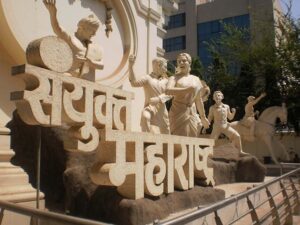GS-1: Post-independence reorganization

Key Points:
- The Samyukta Maharashtra Movement (SMM) created Maharashtra in 1960, driven by Marathi linguistic identity.
- Cultural figures, workers, and socialist ideals fueled the movement.
- Leaders like Annabhau Sathe, Prabodhankar Thackeray, and Dr. B.R. Ambedkar shaped its ideology.
- Mumbai was a contentious focal point despite elite opposition.
In-Depth Analysis:
- Historical Mobilization:
- The demand for a Marathi-speaking state emerged in the 1940s-50s.
- The Samyukta Maharashtra Samiti, backed by unions and writers, led the charge.
- Key events: 1954 RSS support, 1956 election wins, and 1956 Flora Fountain protests.
- Mumbai’s Role:
- Gujarati elites opposed Mumbai’s inclusion.
- Workers and cultural figures asserted Mumbai’s Marathi identity.
- Annabhau Sathe’s Contribution: Used poetry and theatre to galvanize support.
- Ambedkar’s Vision: Advocated linguistic reorganization for equity and democracy.
Conceptual Concepts:
- Communicative Rationality: Public discourse shaped the movement’s cultural identity.
- Linguistic Reorganization: States formed based on language, per the Fazi Ali Commission.
Importance:
- A landmark regional movement in Indian history.
- Set a precedent for federal restructuring via linguistic identity.
- Highlighted the power of culture and grassroots mobilization.
- Serves as a model for democratic statehood movements.




